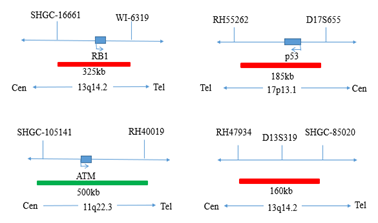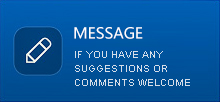IVD - FP014 CLL Chromosome and Gene Anomaly Probe Detection Kit

Cat.# FP-014: CLL Chromosome and Gene Anomaly Probe Detection Kit (IVD)
[Overview]
TP53 mutations are universal across cancer types. This gene encodes a tumor suppressor protein containing transcriptional activation, DNA binding, and oligomerization domains. The encoded protein responds to diverse cellular stresses to regulate expression of target genes, thereby inducing cell cycle arrest, apoptosis, senescence, DNA repair, or changes in metabolism. Mutations in this gene are associated with a variety of human cancers, including hereditary cancers such as Li-Fraumeni syndrome. Alternative splicing of this gene and the use of alternate promoters result in multiple transcript variants and isoforms. Additional isoforms have also been shown to result from the use of alternate translation initiation codons from identical transcript variants.
Ataxia-telangiectasia (A-T) is a recessive disorder resulting from germline mutation of the A-T mutated (ATM) gene on chromosome 11q. Upon sensing double-stranded breaks (DSB), the wild-type kinase encoded by ATM initiates the DNA-damage response by phosphorylating histone H2AX and, subsequently, various other proteins, such as BRCA1 and the MRE11–RAD50–NBS1 (MRN) complex, which are recruited to the damaged site. Additionally, ATM phosphorylates p53, resulting in expression of the cyclin-dependent kinase inhibitor p21 and leading to senescence or apoptosis. Somatic variants can result in inhibition or loss of these functions and can cause resistance to therapies that rely on inducing apoptosis via DSBs.
The RB1 (RB Transcriptional Corepressor 1) protein encoded by this gene is a negative regulator of the cell cycle and was the first tumor suppressor gene found. The encoded protein also stabilizes constitutive heterochromatin to maintain the overall chromatin structure. The active, hypo-phosphorylated form of the protein binds transcription factor E2F1. Defects in this gene are a cause of childhood cancer retinoblastoma (RB), bladder cancer, and osteogenic sarcoma.

[Download] CLL Chromosome and Gene Anomaly Probe Instructions
[Download MSDS] MSDS

